Range 12,038 km Length 60 m Number of seats 250 | Wingspan 50 m Cruise speed 1,010 km/h | |
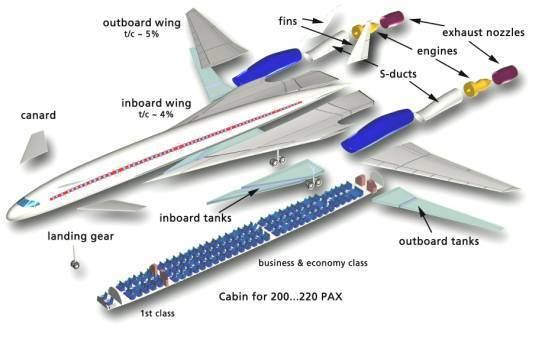 | ||
Unit cost 150,000,000–150,000,000 USD | ||
Boeing sonic cruiser
The Boeing Sonic Cruiser was a concept jet airliner with a delta wing-canard configuration. It was distinguished from conventional airliners by its delta wing and high-subsonic cruising speed of up to Mach 0.98. Boeing first proposed it in 2001, but airlines generally preferred lower operating costs over higher speed. Boeing ended the Sonic Cruiser project in December 2002 and shifted to the slower (Mach 0.85), but more fuel-efficient 7E7 (later named 787 Dreamliner) airliner.
Contents
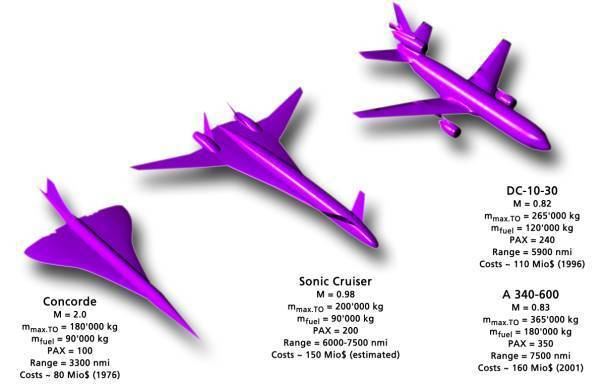
Design and development
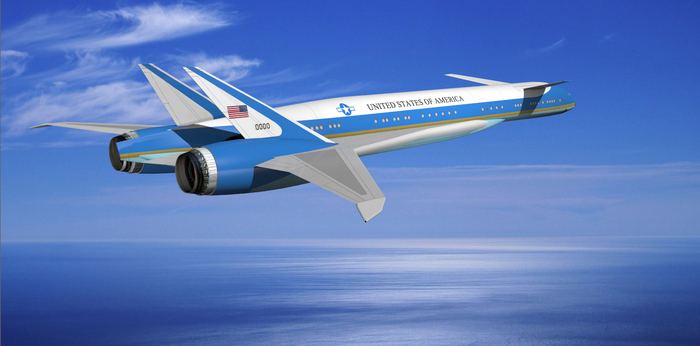
The Sonic Cruiser concept developed from studies that began in the 1990s. A variety of concepts were studied, including supersonic aircraft, aircraft with the engines mounted above the wing, aircraft with a single vertical tail, and aircraft with rectangular intakes. The initial sketches released to the public were highly conjectural. A patent drawing filed by Boeing on March 22, 2001 put the baseline aircraft's dimensions at approximately 250 feet (76 m) in length, with a wingspan of 164.9 feet (50.3 m).
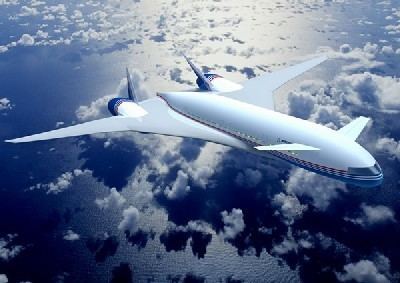
The Sonic Cruiser was born from one of numerous outline research and development projects at Boeing with the goal to look at potential designs for a possible new near-sonic or supersonic airliner. The strongest of these initial concepts was named the "Sonic Cruiser" and publicly unveiled on March 29, 2001, shortly after the launch of the A380 by rival Airbus. Boeing had recently withdrawn its proposed 747X derivative from competition with the A380 when not enough airline interest was forthcoming, and instead proposed the Sonic Cruiser as a completely different approach.
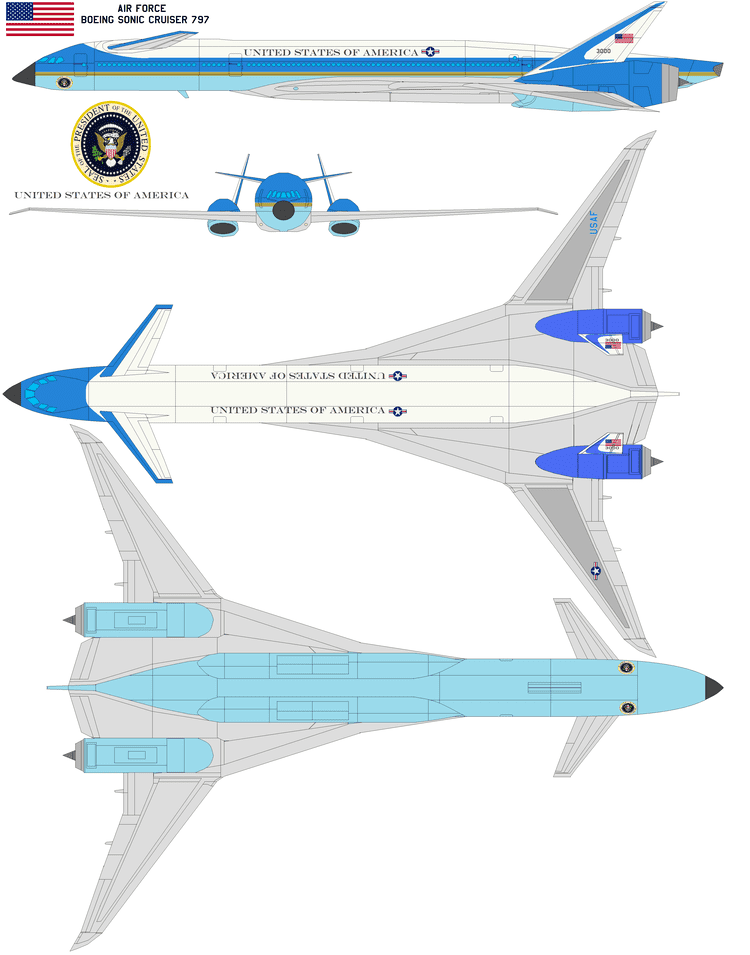
Instead of the A380's massive capacity, requiring a hub and spoke model of operation, the Sonic Cruiser was designed for rapid point-to-point connections for 200 to 250 passengers. With a delta wing and canards arrangement, and flying just short of the speed of sound at Mach 0.95-0.98 (about 627 mph or 1,010 km/h at altitude), the Sonic Cruiser promised 15-20% faster speed than conventional airliner without the noise pollution caused by the sonic boom from supersonic travel. The aircraft design was to fly at altitudes in excess of 40,000 ft (12,000 m), and a range somewhere between 6,000 nautical miles (11,000 km) and 10,000 nautical miles (19,000 km). Boeing estimated the Sonic Cruiser's fuel efficiency to be comparable to best performing twin-engine wide body airliners in 2002.
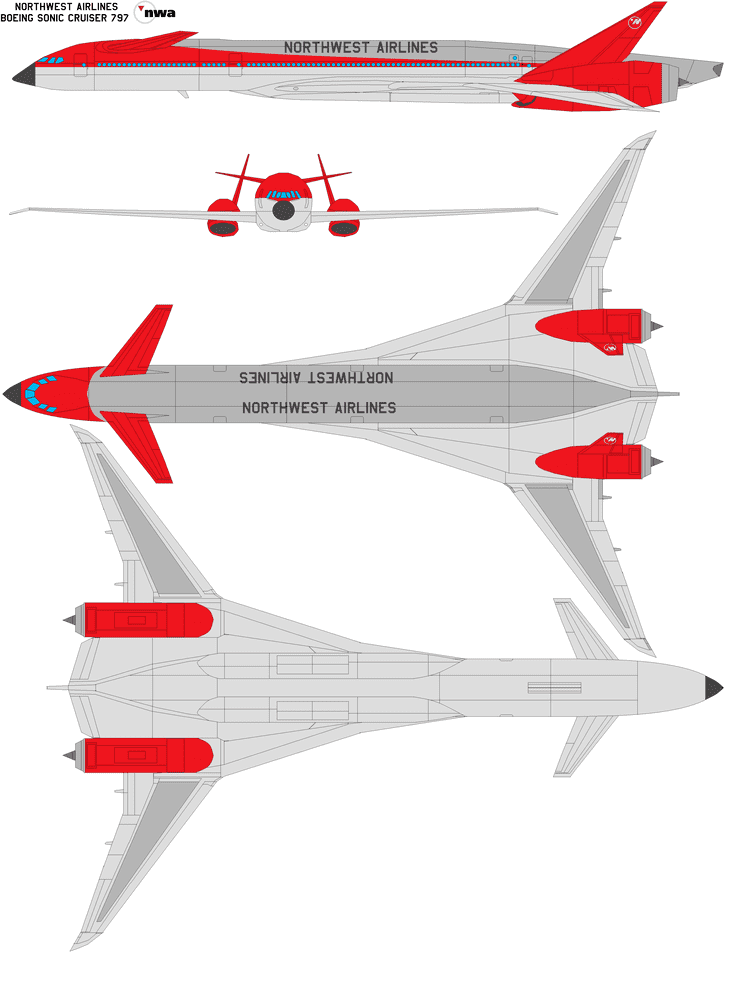
Wind tunnel testing and computational fluid dynamics analysis further refined the Sonic Cruiser concept. Based on artwork released by Boeing in July 2002, the Sonic Cruiser now sported two taller vertical tails with no inward cant, and the forward canard was set at zero degrees dihedral. Boeing was working to finalize the aircraft's configuration in mid-2002.
Cancellation and subsequent research
In the end, most airlines favored lower operating costs over a marginal increase in speed, and the project did not attract the interest for which Boeing had been hoping. The Sonic Cruiser project was finally abandoned by December 2002 in favor of the slower but more fuel-efficient 7E7 (later renamed Boeing 787 Dreamliner). Much of the research from the Sonic Cruiser was applied to the 787, including carbon fiber reinforced plastic for the fuselage and wings, bleedless engines, cockpit and avionics design.
On April 16, 2012, Boeing published an application for a patent for an aircraft configuration similar to that of the Sonic Cruiser.
